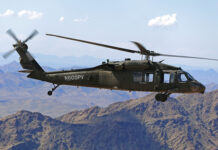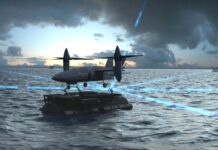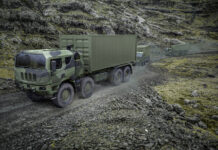In the scope of the Robotic Autonomy in Complex Environments with Resiliency (RACER) programme, the US DoD’s Defense Advanced Research Projects Agency (DARPA) is developing autonomous control systems for unmanned combat vehicles. The vehicles are designed to manoeuvre in unstructured terrain at the limits of the vehicle’s mechanical systems at the same or higher speed and efficiency than those controlled by humans.
“RACER is intended to significantly advance the integration and use of autonomous robotic combat vehicles in the Army, Marine Corps and Special Forces,” saisd Stuart Young, the RACER Programme Manager at DARPA’s Tactical Technology Office.
Chosen Platform
As the RACER Fleet Vehicle (RFV) carrier for Phase 1, Carnegie Robotics has equipped a Polaris RZR S4 1000 TURBO drive-by-wire platform with 360° range and imaging sensors, such as multiple LIDARs, stereo camera pairs, colour and infrared cameras, radar, event sensors and inertial measurement sensors. The data is stored and processed in an environmentally protected shock and vibration resistant and thermally controlled electronic box. Besides, the 74 kW RZRs were equipped with a roll bar and a 7 kW generator for electronics power supply.
Of the four RFVs built so far for RACER, one is currently collecting four terabytes of sensor data per hour to support the artificial intelligence and machine learning-based autonomy algorithms and stack approaches required for high-speed combat manoeuvres in complex terrain. Another four are expected to be available for field trials in March 2022.
To further support software development, DARPA has also collected more than 100 terabytes of RFV-based sensor data from more than 500 kilometres of terrain. This data is shared with teams and managed within a RACER development tool to ensure efficiency and safety.
The RACER programme has also awarded two contracts to develop simulation environments and capabilities that are to enable the development of algorithms for autonomous off-road driving. “These simulation environments will allow teams to test and validate parts of their autonomous systems without having to spend a lot of time and money on field testing,” Young said.
The two main contractors for the RACER-SIM programme are Duality Robotics and Intel-Federal.
Wider Involvement
Three institutes (Carnegie Mellon University, NASA-Jet Propulsion Laboratory and University of Washington) have been contracted to each develop an autonomous controller for the RFV that will allow the vehicle to autonomously determine its path in the terrain and reach the specified destination at maximum speed.
Phase 1 is to conclude with be field tests of the three teams’ vehicles at the National Training Center in Ft. Irwin, California, in March 2022. There, the vehicles are to prove their performance on courses with different terrain and at distances of up to five kilometres.
After the successful completion of Phase 1, it is planned to continue the investigations in Phase 2 with a combat vehicle demonstrator in the ten-ton class. The objective is to further develop speed, range and mobility beyond those of the RFV. In addition, the tactical derivation of the new platforms will be investigated in a complementary research track.












